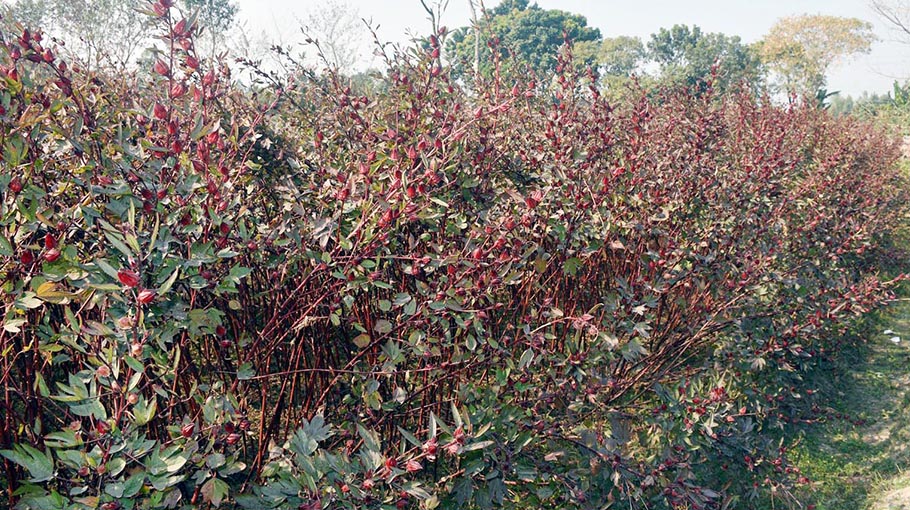Food from mesta jute
An economic potential stuck in lab

The Rangpur Regional Center of Bangladesh Jute Research Institute has produced a number of food products from Mesta jute through research. However, the economic potential of these valuable products is still stuck in the laboratory as the industrialists have not come forward in marketing the items.
In addition to being used as a vegetable or pickle, research is underway to see its use in other food products. However, after the release of this variety, it has not been extended to the farmer level yet.
Small scale farming and research activities are being carried out in the research centers. This requires the cooperation and attention from the government. Besides, the entrepreneurs have come forward with the possibility that this Mesta jute will one day be appreciated by the farmers as a lucrative and profitable crop.
Visiting the Jute Research Center, it has been seen that the cutting of Mesta jute has begun. Women workers are drying crop in the sun spreading the top shell of jute seeds (fruits). The office is lined with containers of jams, jellies, juices and pickles. The incoming provided with the treats to taste. Rangpur Regional Jute Research Center Chief Scientific Officer Md Abul Fazl Mollah said that the popular name of this plant is Chukur. The fruit is known by different names in different parts of Bangladesh.
“Chukur leaves can be cooked and eaten as a curry. Tea, jam, jelly, juice, pickle etc are made from its fleshy stalks. Chukur leaves and fruits are rich in protein, carotene, calcium, vitamin-C and other nutrients. Mesta leaf tea is beneficial for heart disease and also controls blood cholesterol,” he said.
In addition, its leaves contain anti-cancer ingredients. Despite having so many times, its use is stuck only in the laboratory. Rangpur Jute Research Center has prepared various food items including tea and left them only for exhibition and entertaining the guests, he added.
He said that the jute research center has not been able to attract the attention of the industrialists even after holding various meetings and seminars to market the crop and convey its quality to the common man.
He said, “They are not showing interest in this crop. However, expressing hope, the chief scientific officer said that last year some young people in Pabna had benefited by cultivating Mesta jute in one or two pieces of land.”
The research center could not attract the attention of the entrepreneurs as there was not much opportunity for publicity. According to the concerned sources, it costs around Tk 20,000 including seeds, fertilizers and care to produce Mesta jute in this land. If the jute seed obtained from that land can be marketed by making food products from the top cover, it is possible to make at least five times profit by meeting all the expenses.




